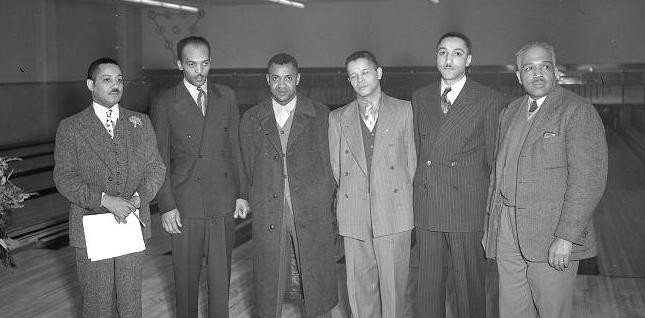The Ferguson Brothers—Edward, George, and Clinton Ferguson—were among the most influential behind-the-scenes figures in the Chitlin’ Circuit, playing a critical role in building and sustaining the infrastructure that allowed Black entertainers to perform safely and profitably during segregation.
Venue Ownership & Operation
The Ferguson brothers owned and operated several key nightclubs and theaters across the Southeast and Midwest. Most notably:
- The Royal Peacock in Atlanta (formerly the Top Hat Club)
- Club Paradise in Memphis
- New clubs in Chattanooga, Birmingham, and Nashville
These were among the most prominent venues on the circuit, hosting stars like Ray Charles, James Brown, B.B. King, and Aretha Franklin.
Black-Owned Business Empire
They were successful entrepreneurs at a time when Black ownership was rare in the entertainment business. Their chain of clubs was a vital part of a larger Black economic network that gave performers control, stability, and visibility in a segregated world.
Tour Coordination & Promotion
The Fergusons helped develop routes for touring acts—ensuring that musicians could perform multiple shows in succession across different cities. This efficiency allowed artists to:
- Maximize income
- Avoid exploitation by white promoters
- Build fanbases in Black communities
Nurturing Talent
They were early champions of young acts, giving now-legendary performers their first chances to tour. Artists like Little Richard and Ike & Tina Turner benefitted from their infrastructure before crossing into mainstream success.
Cultural Legacy
By maintaining safe, successful Black-run venues, the Ferguson brothers preserved spaces for Black creativity to flourish and helped define what we now recognize as Black popular culture in music and comedy.
Without the Ferguson brothers’ vision and business savvy, the Chitlin’ Circuit as a stable, functioning network would not have existed in the same impactful form. They were the architects behind the curtain—quietly empowering a generation of Black performers to rise.
Today, the Chitlin’ Circuit is remembered not just as a string of venues, but as a cultural lifeline that preserved and celebrated Black creativity under extraordinary pressure. It was a crucible of greatness forged from necessity, and its influence still echoes in clubs, arenas, and comedy stages around the world.
